Top 4 Types of Persian Pistachios You Need to Try in 2025
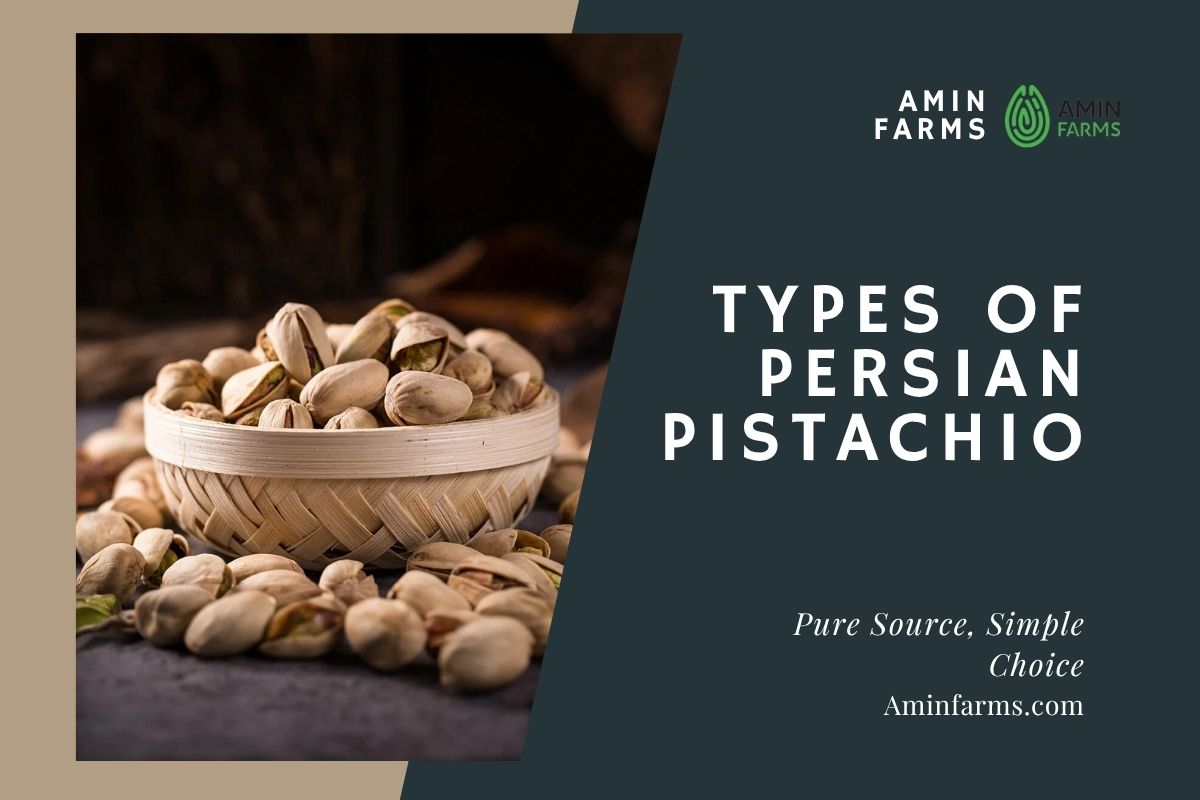
When it comes to pistachios, Iran stands out as one of the top producers in the world, both in quality and variety. Among the many options available, the most common types of Persian pistachio are known for their distinct shapes, flavours, and market appeal.
From the small and round Fandoghi to the bold Kalleh Ghouchi, the elegant Ahmad Aghaei, and the luxurious Akbari, each type has something special to offer.
In this article, we’ll take a closer look at the main types of Persian pistachio and explore what makes each one unique. Whether you’re a pistachio enthusiast or just getting familiar with these delicious nuts, this quick guide will help you understand the differences and pick the one that’s right for you.
Unveiling the World of Persian Pistachios
Iranian pistachios aren’t just snacks; they’re part of a deep-rooted tradition. Known for their bold flavour and top-tier quality, these nuts hold cultural, culinary, and economic importance in Iran.
Thanks to Iran’s arid climate and mineral-rich soil, pistachios grown here develop a distinct aroma and taste that sets them apart. They’re used in a range of foods, from savoury rice dishes to traditional sweets, or enjoyed on their own as a nutritious treat.
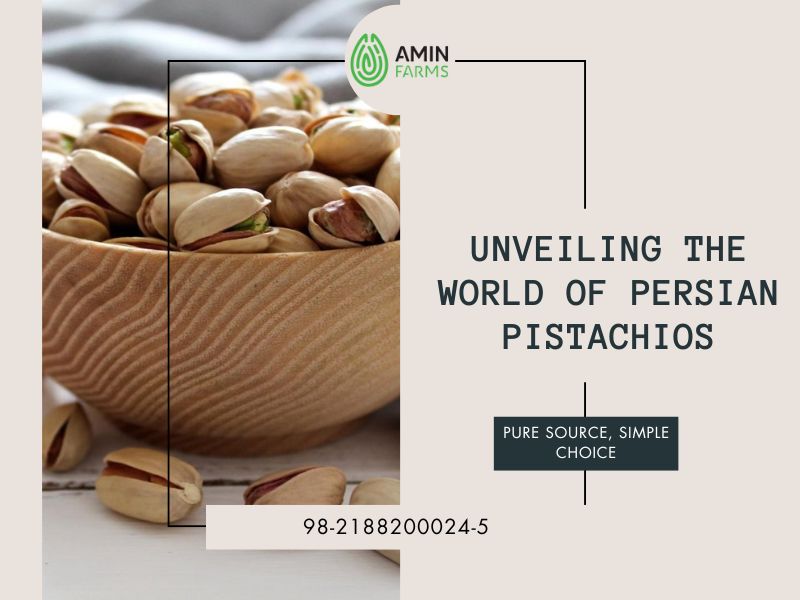 One reason behind their global recognition is the diversity among the types of Persian pistachios. Fandoghi is smaller and more rounded, while Kalleh Ghouchi is larger and more intense. Ahmad Aghaei brings a longer shape with a delicate flavour, and Akbari stands out as the most luxurious with its elongated look and rich taste.
One reason behind their global recognition is the diversity among the types of Persian pistachios. Fandoghi is smaller and more rounded, while Kalleh Ghouchi is larger and more intense. Ahmad Aghaei brings a longer shape with a delicate flavour, and Akbari stands out as the most luxurious with its elongated look and rich taste.
Why Are Persian Pistachios Unique?
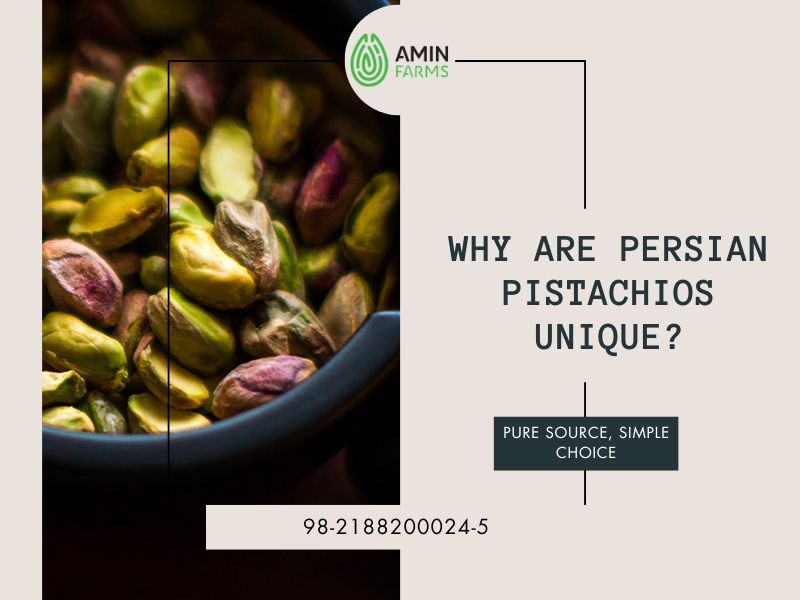 Iranian pistachios have earned their reputation not just from heritage but from consistent quality. Here’s what gives them their competitive edge:
Iranian pistachios have earned their reputation not just from heritage but from consistent quality. Here’s what gives them their competitive edge:
- Perfect Climate: Iran’s hot summers and cold, dry winters create the ideal environment for growing pistachios with bold flavour and a deep, natural aroma.
- Incredible Variety: There’s no shortage of variety when it comes to the different types of Persian pistachios. From the round Fandoghi to the luxurious Akbari, each type has its look, taste, and feel.
- Rich Taste & Creamy Texture: Thanks to their higher fat content, Iranian pistachios are richer, more flavorful, and have a naturally creamy bite that sets them apart.
- Naturally Split Shells: Many Iranian pistachios crack open on the tree as they ripen, proof of natural maturity and quality, requiring no forced processing.
- More Nut, Less Shell: With more kernel and less shell per nut, they offer better value and satisfaction to consumers.
Akbari Pistachio: The Premium Choice
Akbari pistachio is one of the most distinguished and luxurious types of Persian pistachio, well-known for its long, elegant shape, rich flavour, and exceptional quality. Often referred to as the “long pistachio,” this variety is primarily cultivated in the provinces of Kerman and Khorasan. Thanks to its late-blooming and late-harvesting nature, Akbari is considered one of the more cold-resistant Iranian pistachio varieties.
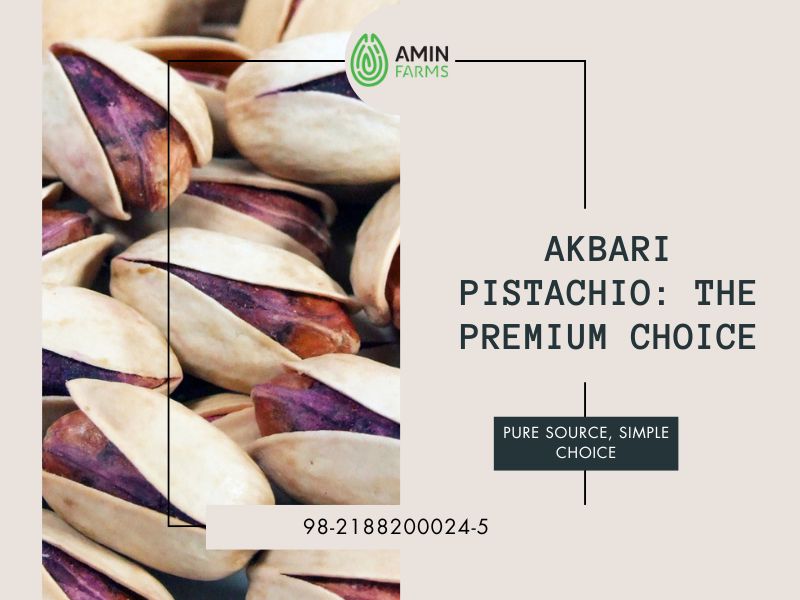 What sets Akbari apart is its size and shape, long and slender, almost almond-like in appearance. The kernel is relatively large with a natural purplish-brown hue, which transforms into a vibrant green once roasted and salted. Its signature buttery taste makes it a favourite not only for snacking but also for use in desserts and the food industry.
What sets Akbari apart is its size and shape, long and slender, almost almond-like in appearance. The kernel is relatively large with a natural purplish-brown hue, which transforms into a vibrant green once roasted and salted. Its signature buttery taste makes it a favourite not only for snacking but also for use in desserts and the food industry.
From an economic perspective, Akbari pistachios hold premium value. Their popularity in export markets, especially in Europe and the Arab world, stems from their luxurious appearance and unbeatable quality. Compared to other types of Persian pistachio, Akbari often commands a higher price, underscoring its status as a high-end product. The harvesting and processing of this pistachio also require careful handling to maintain its flawless look and taste.
In essence, Akbari is not just another agricultural product; it’s a symbol of craftsmanship, quality, and the rich legacy of pistachio cultivation in Iran.
Characteristics and Export Markets
With its unique appearance and premium quality, Akbari pistachio stands out clearly from other types of pistachios, making it a top choice for export markets around the world. One of its most recognizable features is its large, elongated shape, which gives it a luxurious, eye-catching look. Akbari pistachios have a large, flavorful kernel with a pleasant natural colour, encased in a uniformly open, bone-coloured shell, perfect for hand-sorting and attractive packaging.
The flavour of Akbari is just as impressive: rich, smooth, and deeply satisfying, making it a favourite among consumers who care about both taste and presentation. It is also a late-harvest variety, which allows the nuts to develop more fully, resulting in higher kernel quality and better overall flavour.
Thanks to these standout characteristics, Akbari pistachios have carved out a strong position in the global marketplace. European countries, especially Germany and Italy, are among the primary destinations for this variety, as they place high value on quality and visual appeal. Additionally, Akbari has strong demand in Persian Gulf countries and parts of East Asia, where it is widely used both as a premium snack and as an ingredient in fine confections and gourmet foods.
The growing popularity of this exceptional variety not only boosts Iran’s pistachio exports but also helps reinforce the reputation of types of Persian pistachio as a global symbol of quality, tradition, and authenticity.
Ahmad Aghaei: The Bright and Flavorful Nut
Ahmad Aghaei pistachio is genuinely one of the shining stars among types of Persian pistachio, winning hearts with its striking colour, balanced flavour, and appealing appearance. This beloved variety, often listed alongside Akbari and Kalleh Ghouchi as one of Iran’s best, is primarily grown in the fertile lands of Kerman and Khorasan Razavi provinces.
What sets this variety apart is its almond-like, elongated shape. Although slightly shorter than Akbari, it still carries a refined, market-friendly look that makes it a favourite for both domestic and international consumers. Once lightly roasted, the pistachio kernel reveals a beautiful light green-yellow colour, making it an excellent choice for mixed nut assortments, food decoration, and dessert presentation. Its flavour is delicately balanced and rich but not overwhelming, which makes it ideal for both raw snacking and culinary applications.
 One of the standout Persian pistachio characteristics of Ahmad Aghaei is its high natural open rate (“smiling” shell), which allows for easier processing and higher visual appeal. It plays a key role in Iran’s pistachio exports, particularly to European and East Asian markets where consumers value both taste and presentation.
One of the standout Persian pistachio characteristics of Ahmad Aghaei is its high natural open rate (“smiling” shell), which allows for easier processing and higher visual appeal. It plays a key role in Iran’s pistachio exports, particularly to European and East Asian markets where consumers value both taste and presentation.
But it’s not just about looks; Ahmad Aghaei also offers excellent value. With a more accessible price point than Akbari, this pistachio provides more people with the opportunity to enjoy a high-quality product without compromising on flavour or beauty. Simply put, Ahmad Aghaei is a perfect example of the diversity and unmatched quality found in the world of Persian pistachios.
Fandoghi Pistachio: Small but Mighty
Fandoghi pistachio, also known as Ohadi, may be small in size, but it plays a significant role in the production and export of Iranian pistachios. As one of the most widely cultivated types of Persian pistachio, it dominates a large portion of pistachio orchards across Iran. Thanks to its strong resistance and high yield, it’s often considered the go-to variety for growers looking for both reliability and profitability. The name “Fandoghi” perfectly reflects its appearance: small, round, and similar to a hazelnut.
 While it is the smallest among the main types of Persian pistachio, Fandoghi doesn’t compromise on flavour or quality. Its kernel, though petite, is flavorful and naturally green, making it an excellent choice for use in the food industry, especially in sweets, desserts, ice cream, and pastries. Because of its size, more nuts fit into each unit of weight, making it a smart option for bulk buyers and exporters looking for efficiency and value.
While it is the smallest among the main types of Persian pistachio, Fandoghi doesn’t compromise on flavour or quality. Its kernel, though petite, is flavorful and naturally green, making it an excellent choice for use in the food industry, especially in sweets, desserts, ice cream, and pastries. Because of its size, more nuts fit into each unit of weight, making it a smart option for bulk buyers and exporters looking for efficiency and value.
Fandoghi pistachio is a key player in Iran’s pistachio exports due to its mass availability and competitive pricing. Its primary markets include China, India, and Russia, countries that prioritize high volume at reasonable prices. Whether used as an everyday snack or as a key ingredient in large-scale food production, Fandoghi pistachio proves that being small can be a serious advantage.
Kalleh Ghoochi: The Jumbo Powerhouse
Kalleh Ghouchi pistachio, whose name means “ram’s head” in Persian, is one of the largest and boldest Iranian Pistachio Varieties. Known for its impressive size and round, full-bodied appearance, this luxurious variety is highly sought after in both domestic and international markets. It is mainly cultivated in Iran’s Kerman province, a region renowned for producing top-quality pistachios.
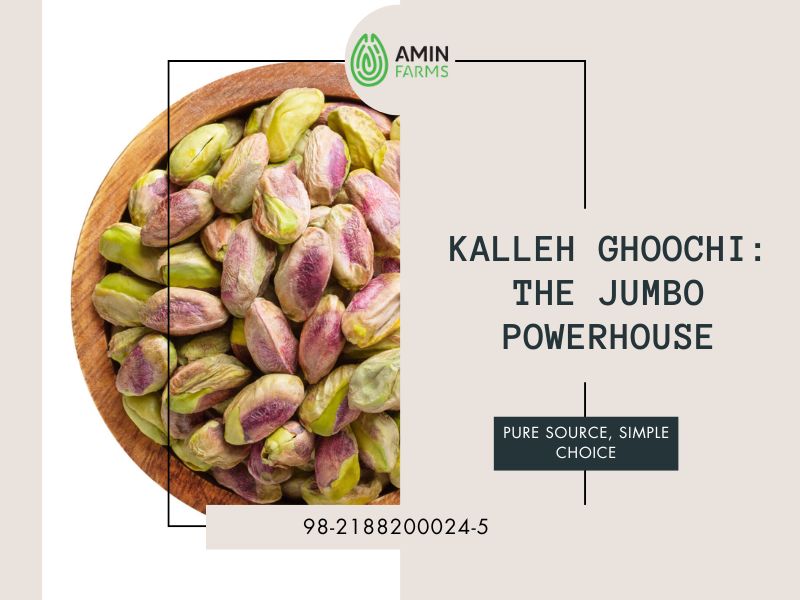 The most distinctive feature of Kalleh Ghouchi is its oversized, plump shape, which instantly sets it apart from other types of Persian pistachio. The shell is typically bright and naturally open, adding to its visual appeal. Inside, you’ll find a large, rich-tasting kernel that delivers a deep, satisfying flavour with every bite. Because of its premium look and mouthfeel, Kalleh Ghouchi is a favourite for snacking, especially during gatherings and special occasions.
The most distinctive feature of Kalleh Ghouchi is its oversized, plump shape, which instantly sets it apart from other types of Persian pistachio. The shell is typically bright and naturally open, adding to its visual appeal. Inside, you’ll find a large, rich-tasting kernel that delivers a deep, satisfying flavour with every bite. Because of its premium look and mouthfeel, Kalleh Ghouchi is a favourite for snacking, especially during gatherings and special occasions.
Though its yield may not be as abundant as Fandoghi pistachio, its premium status keeps demand consistently high. Countries like Germany, along with various Arab nations and parts of Asia, are among its primary export destinations. Its bold size and rich flavour make it a standout symbol of quality and abundance among types of Persian pistachio.
Different Methods for Categorizing Iranian Pistachios
Iranian pistachios can be categorized in various ways, including:
Categorization of Iranian Pistachios Based on Origin and Cultivation Region
The central pistachio cultivation regions in Iran include Kerman, Khorasan, and Rasht. Areas like Rafsanjan and Damghan have also gained global recognition for their pistachio production. Rafsanjan pistachios are among the highest quality in the world, while Damghan is a region where specific types of pistachios, such as Shah Pasand and Khanjari, are grown and produced.
The geographical distinctions that lead to different types of pistachios stem from the unique climatic conditions of each region, including soil and weather, which result in distinct flavors of each kind of pistachio.
Pistachio Types Based on Harvest Time
The harvest time for Iranian pistachios typically spans from August to October, and the specific timing of the harvest is a key factor in categorizing Iranian pistachios. Based on the harvest time, there are three models of Iranian pistachios:
- Early-harvest pistachios: These are pistachios that are ready for harvest from late August to early September, such as the Badami and Kalleh Ghouchi varieties.
- Mid-harvest pistachios: Pistachios that are harvested from early to mid-September, such as Fandoghi and Ahmad Aghaei pistachios.
- Late-harvest pistachios: Pistachios that are harvested from late September to late October, and have a larger kernel due to their more complete growth, such as Akbari pistachios.
Which Pistachio Suits Your Needs?
When it comes to choosing the best pistachio, it all depends on your needs and taste. Among the main Iranian pistachio varieties, Akbari, Ahmad Aghaei, Fandoghi, and Kalleh Ghouchi, each type offers something unique that makes it ideal for specific uses.
If you’re looking for something elegant and luxurious to serve to special guests or to give as a premium gift, Akbari pistachio is your go-to choice. With its long, almond-shaped form and rich flavour, it stands out as one of the most exclusive types of Persian pistachio.
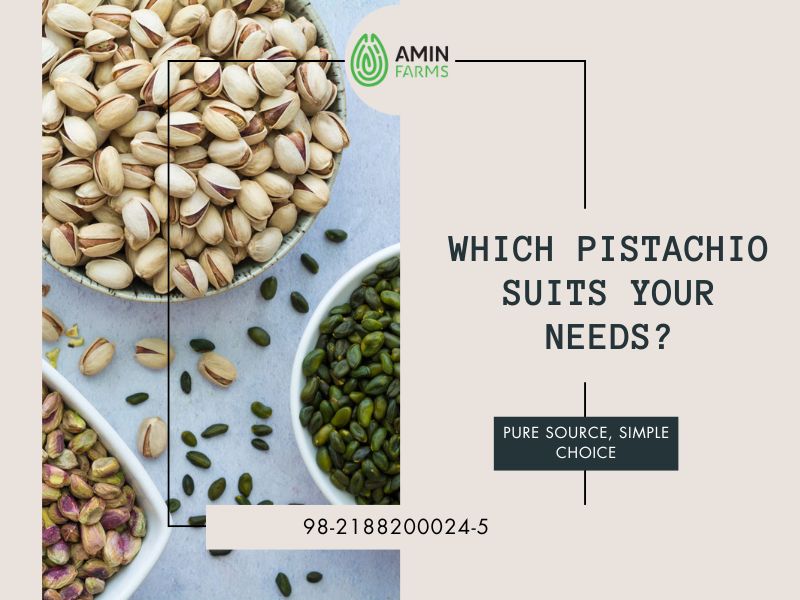 For those who want a visually bright pistachio that has a large kernel and offers a well-balanced taste, perfect for both snacking and decoration, the Ahmad Aghaei pistachio is an excellent option. Its beauty and more accessible price point make it a popular favourite.
For those who want a visually bright pistachio that has a large kernel and offers a well-balanced taste, perfect for both snacking and decoration, the Ahmad Aghaei pistachio is an excellent option. Its beauty and more accessible price point make it a popular favourite.
If you’re after cost efficiency and high volume, whether for everyday snacking, confectionery, or large-scale food production, Fandoghi pistachio (also known as Ohadi) is a smart pick. Its smaller size means more nuts per kilogram, which makes it ideal for bulk buyers.
And finally, if you want a bold and flavorful pistachio with an extra-large, round shape that offers a truly satisfying bite, Kalleh Ghouchi pistachio is the perfect indulgence. This variety is beloved by those who enjoy a richer, more intense pistachio experience.
Comparing Varieties for Culinary and Export Use
Selecting the right pistachio for culinary use or export markets matters more than many realize. Each of the main Iranian Pistachio Varieties offers its strengths, making it better suited for specific applications.
Fandoghi pistachio, with its smaller size and high production volume, is often called the king of exports. Its competitive pricing and wide availability make it a top choice for high-volume consumer markets such as China and India. It’s also the go-to option for food manufacturers, ideal for making ice cream, pastries, pistachio butter, and other processed products. Its efficiency and affordability explain its widespread use in industrial production.
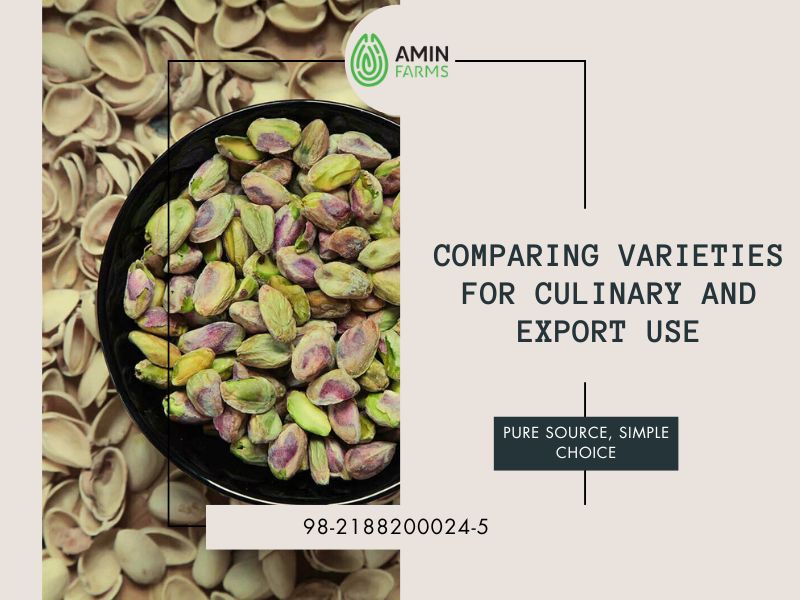 On the other hand, Akbari and Kalleh Ghouchi pistachios are prized for their luxurious appearance and large size. Akbari, with its long, elegant shape, is the perfect choice for premium snack packaging, upscale gift boxes, and refined hospitality, especially in European and Gulf markets. Kalleh Ghouchi, known for its bold, round kernel, offers a rich mouthfeel that makes it a favourite among those who value both size and flavour. While these varieties may be produced in smaller quantities, they carry high added value in niche luxury markets.
On the other hand, Akbari and Kalleh Ghouchi pistachios are prized for their luxurious appearance and large size. Akbari, with its long, elegant shape, is the perfect choice for premium snack packaging, upscale gift boxes, and refined hospitality, especially in European and Gulf markets. Kalleh Ghouchi, known for its bold, round kernel, offers a rich mouthfeel that makes it a favourite among those who value both size and flavour. While these varieties may be produced in smaller quantities, they carry high added value in niche luxury markets.
Ahmad Aghaei Pistachio offers a balanced solution between visual appeal and practicality. With its bright shell colour and smooth flavour, it’s ideal for snacking, mixed nut assortments, and food decoration. Its solid export presence is thanks to a combination of reasonable pricing and attractive appearance, positioning it as a versatile middle ground.
